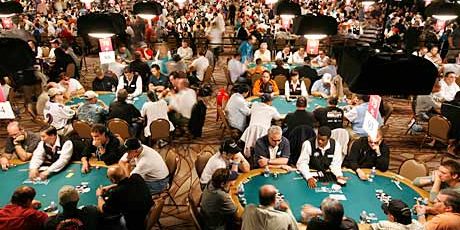Optimal Poker Tournament Playing Strategy & Short-handed considerations
It’s true that most poker tournament formats are still using 9- or 10-player format, but 6-max is definitely on the rise. Regardless if you play online poker or a the live tables, there are some strategies that work much better at these short-handed tables than at the traditional tables, so if you’re interested in taking on some of the short-handed tables, this article will help you take on the challenge and win real cash.
The key factor with strategy in 6-max poker tournaments is blind pressure — both direct and indirect. In the direct sense, the blinds are coming at you more quickly, which means you have to go about gathering chips more aggressively so that your stack can stay constant. You’ll have to play more hands, and you’ll have to take a more aggressive stance when you play them. You have more time to wait for the right hand to come along in a larger tournament, but the later you get in a 6-handed tournament, the poorer a strategy waiting becomes.
In an indirect sense, you also have to watch out for the effects of the rest of the field playing more hands — and doing so aggressively as well. This means that your opponents are likely to bet and/or raise with a weaker hand, so you can adjust your poker tournament strategy by doing such things as pushing raises higher when you really do have a strong hand, and then you can play back at a lighter level when your hand is on the lower end of the spectrum.
What’s the benefit of raising “light”? If you never do it, you will blind away, and opponents who are savvy will figure out that you only raise when you have stronger hands. However, if you raise too often, you are vulnerable to the re-steal, particularly when the chip stacks get smaller later in the game.
Another consideration is that you get more “BVB” play in a 6-max game. This stands for “Button against Blind” and can bring several different factors into play. When you are looking for the right hand to use for blind defense often varies with which player is on the button — and that player’s habits when it comes to raising, and whether they will fold or call for re-raises. A 6-max game requires you to defend more — and to steal more. The button is always a strong place to be, going last in all of the betting rounds post-flop. A full-ring game allows you to do more stealing and less defending, but in a 6-handed situation you have to be able to do both.
Set mining has less value when you are in a short-handed situation. Because your opponents will not have as big of a chance to have a strong hand, this can payoff. In a full-ring game, someone else is more likely to have a premium hand against you in a raised pot, but in 6-max you are more likely to have the stronger hand, but your raises are also not likely to go as high.
If you like to get aggressive in a poker tournament game, use moves to get back at your opponents and play post-flop, 6-max play might be right down your alley. However, just as in any tournament, understand the skill levels of your opponents as quickly as possible, and adjust accordingly.
Ready to put your skills on the line? You can practice as much as you need on the free online poker tables at Cafrino and get all the practice you need while winning real cash. Good luck!







